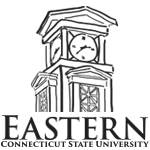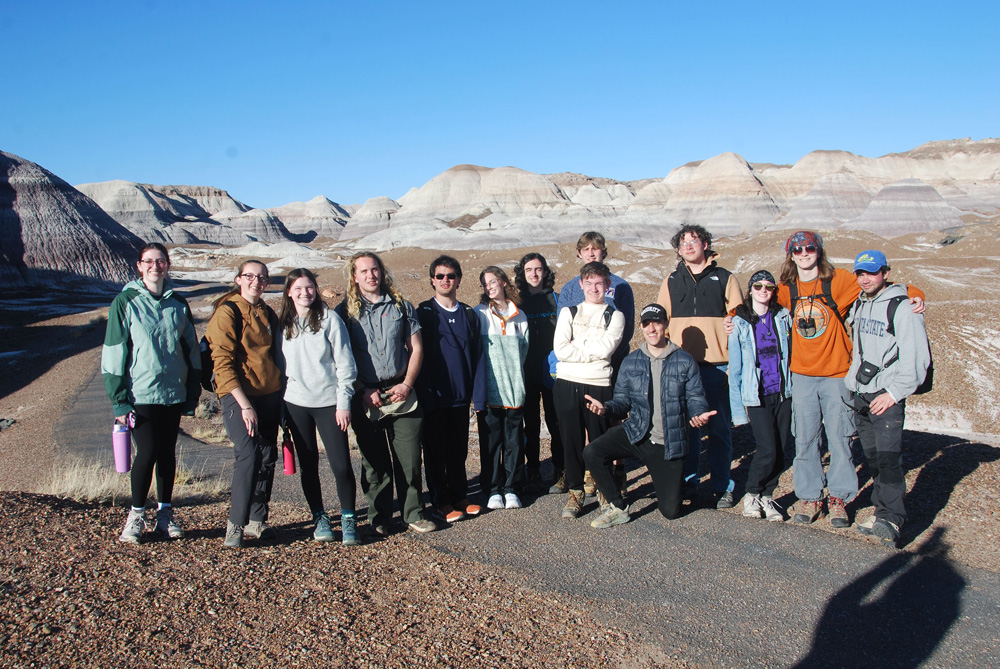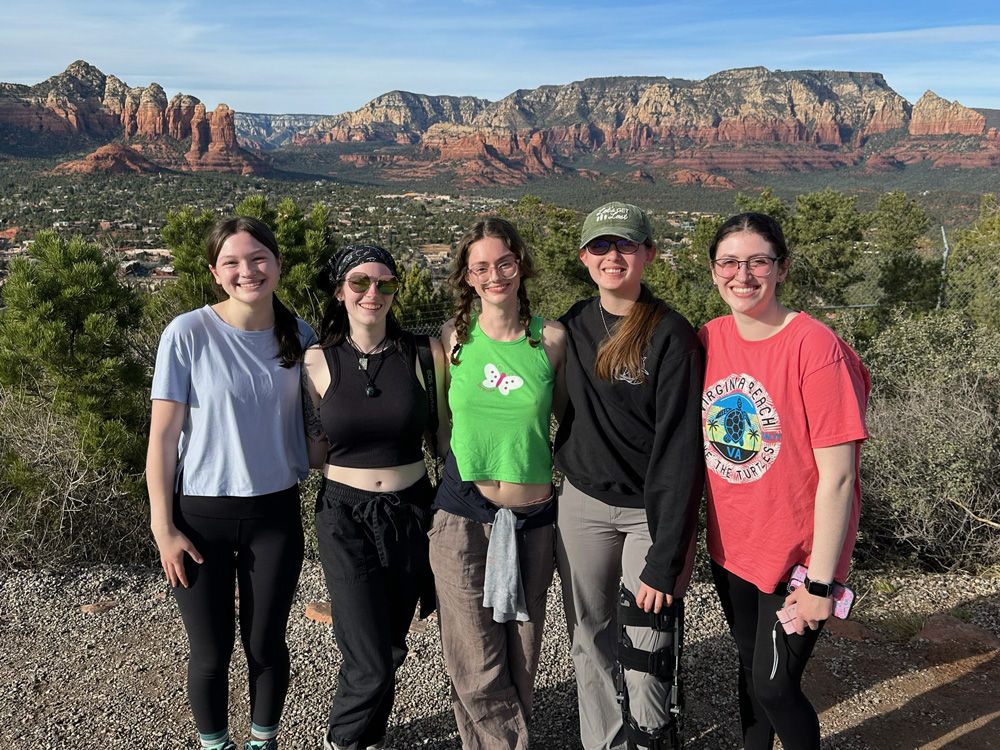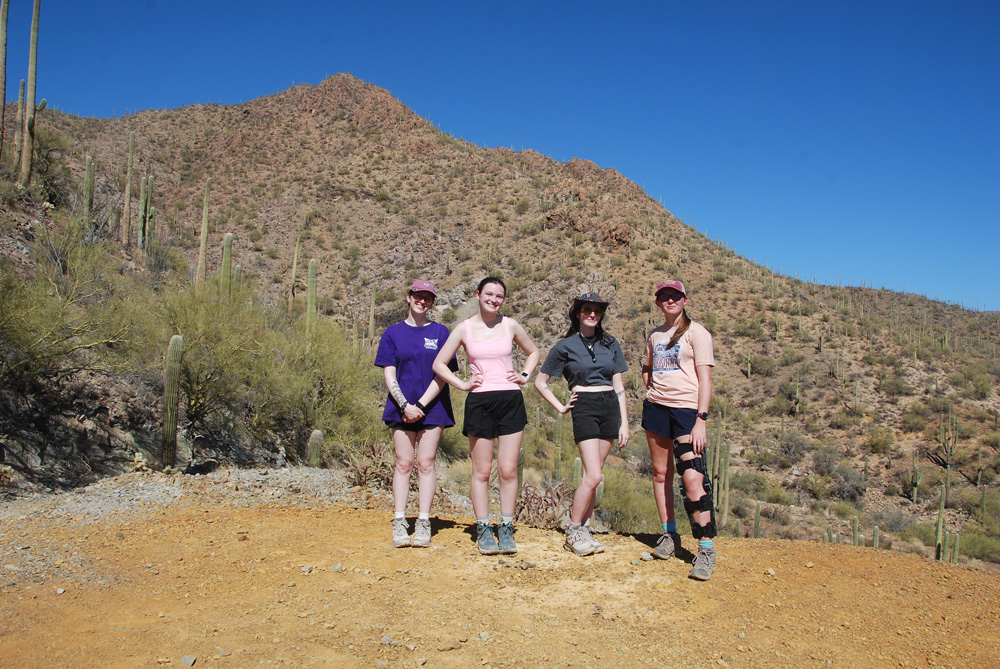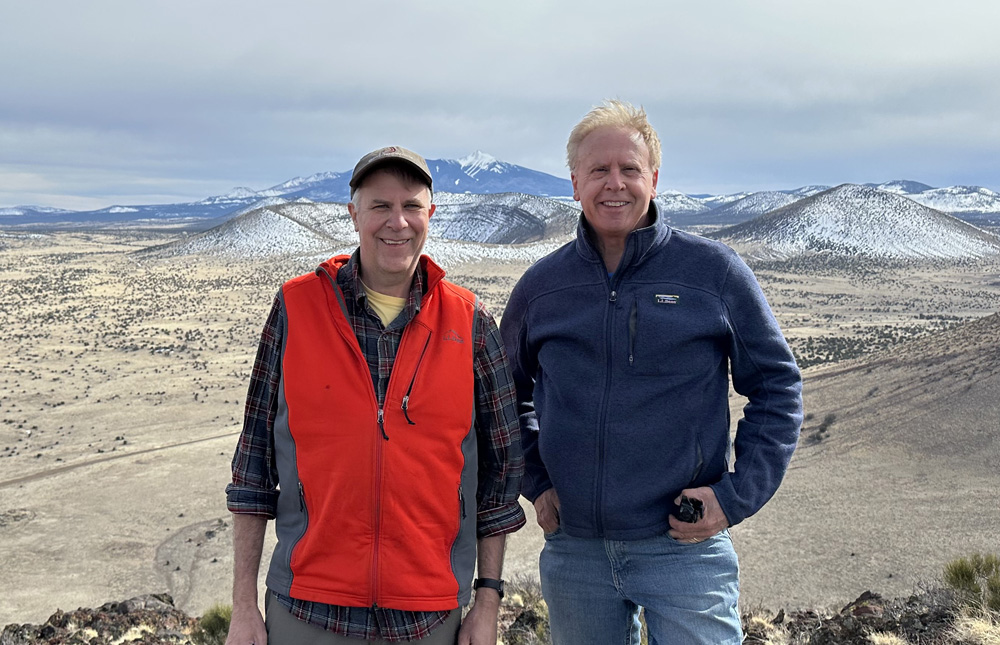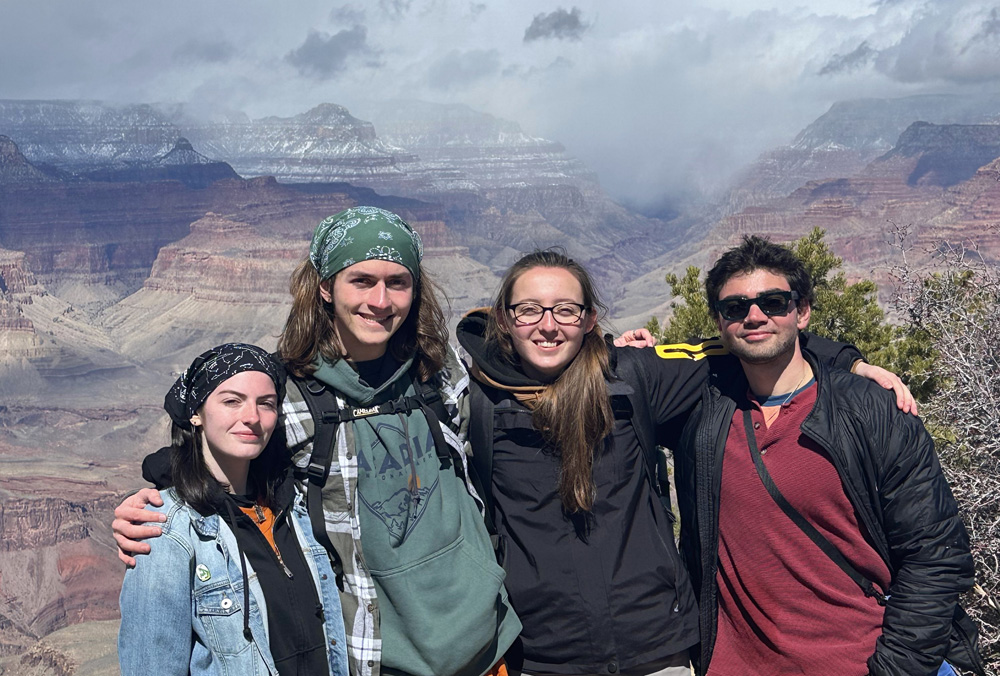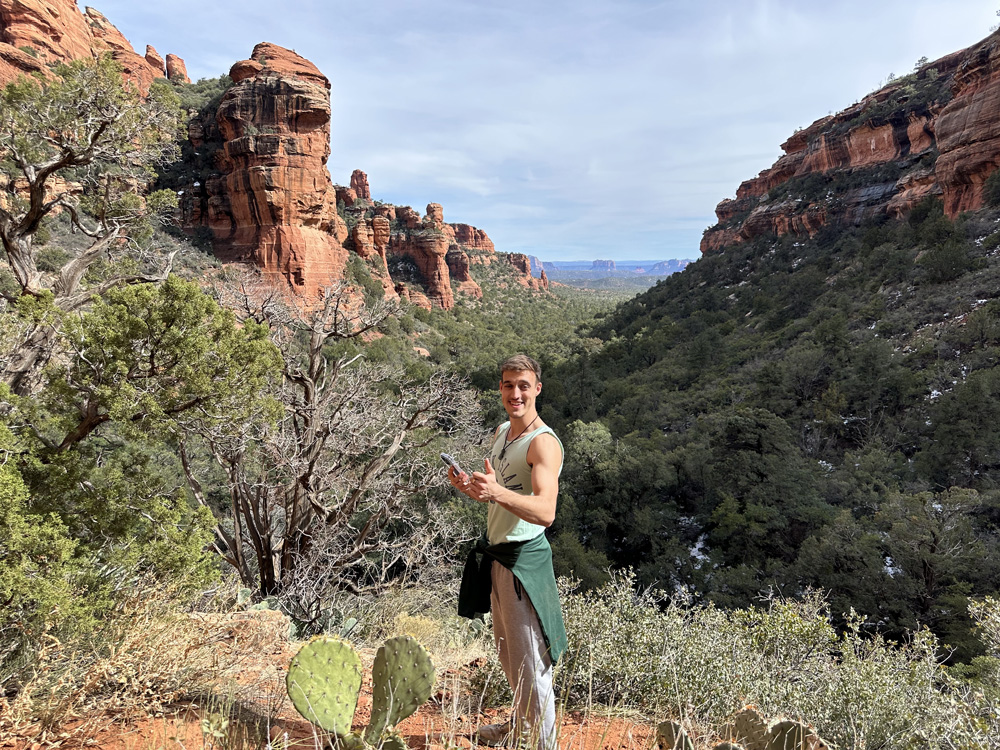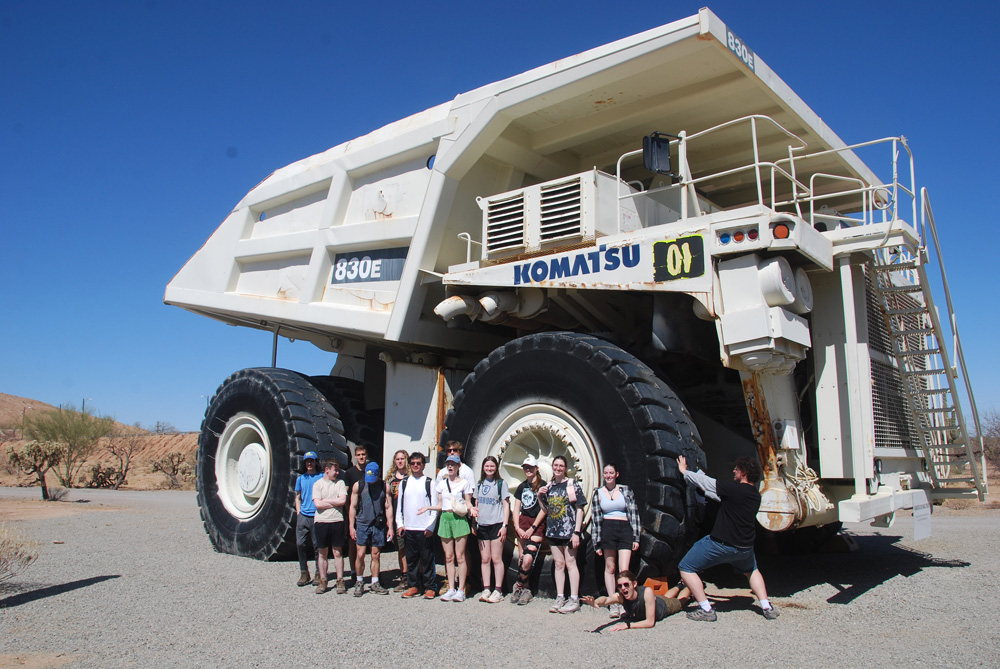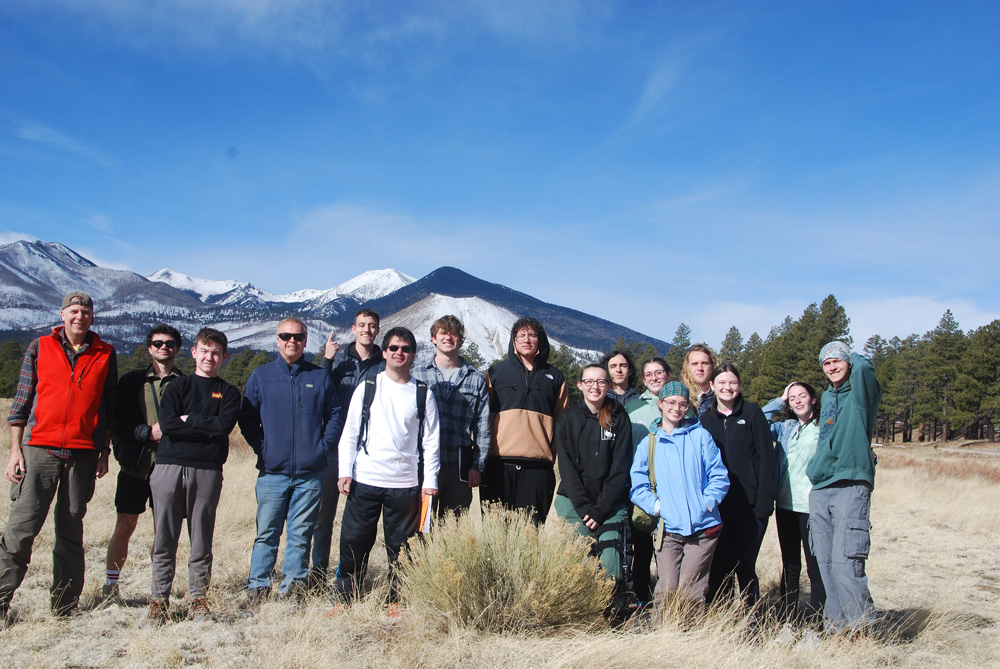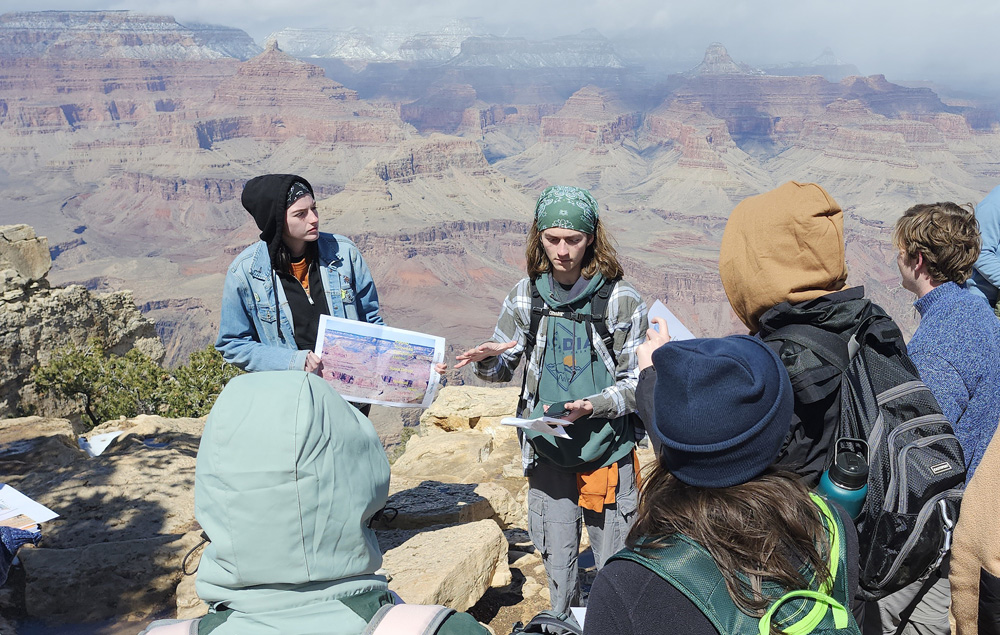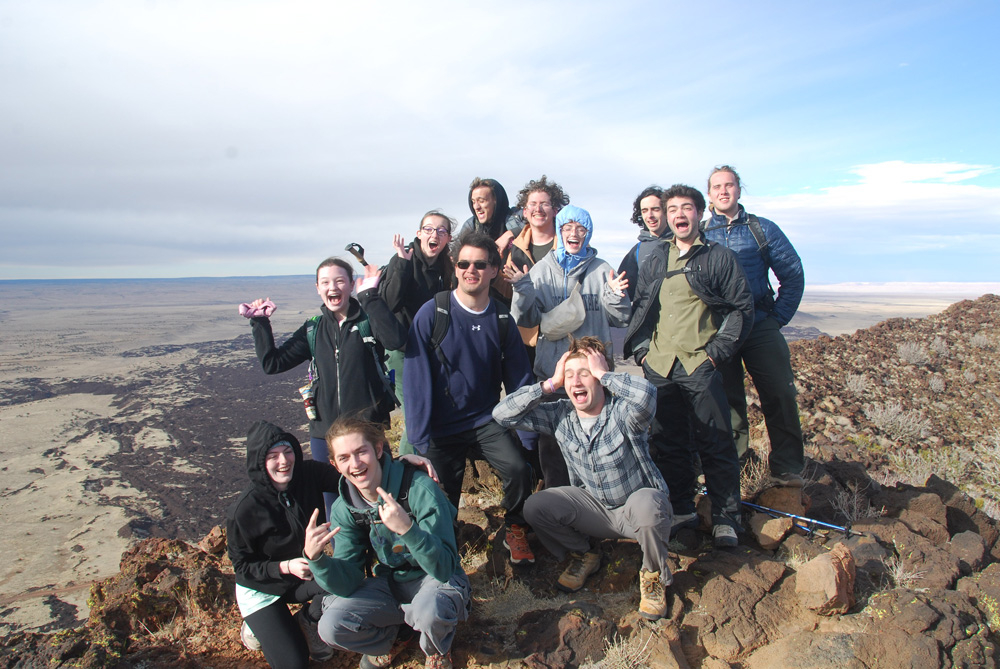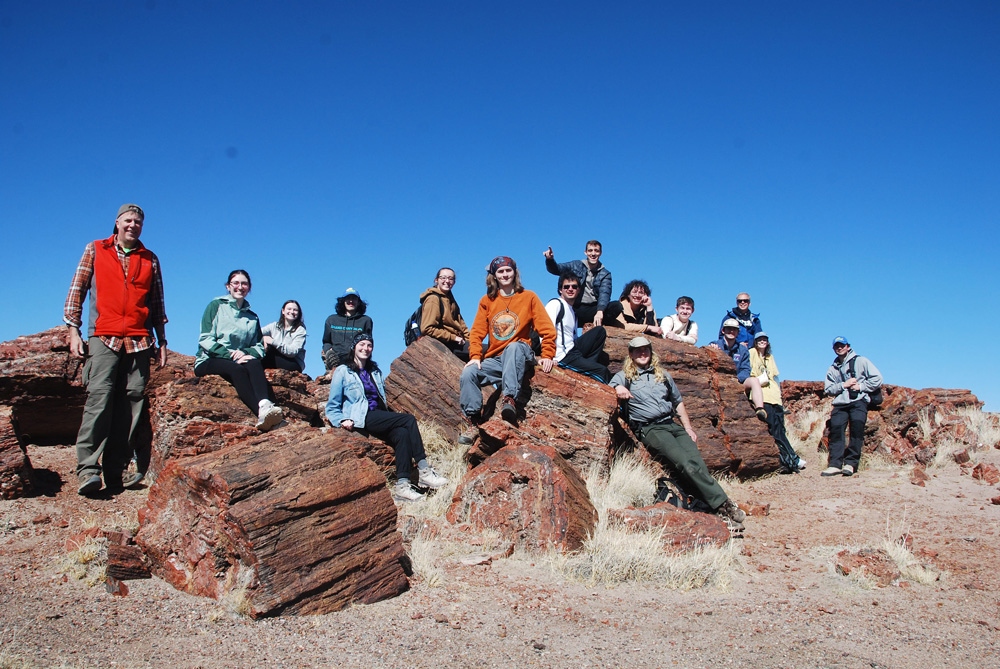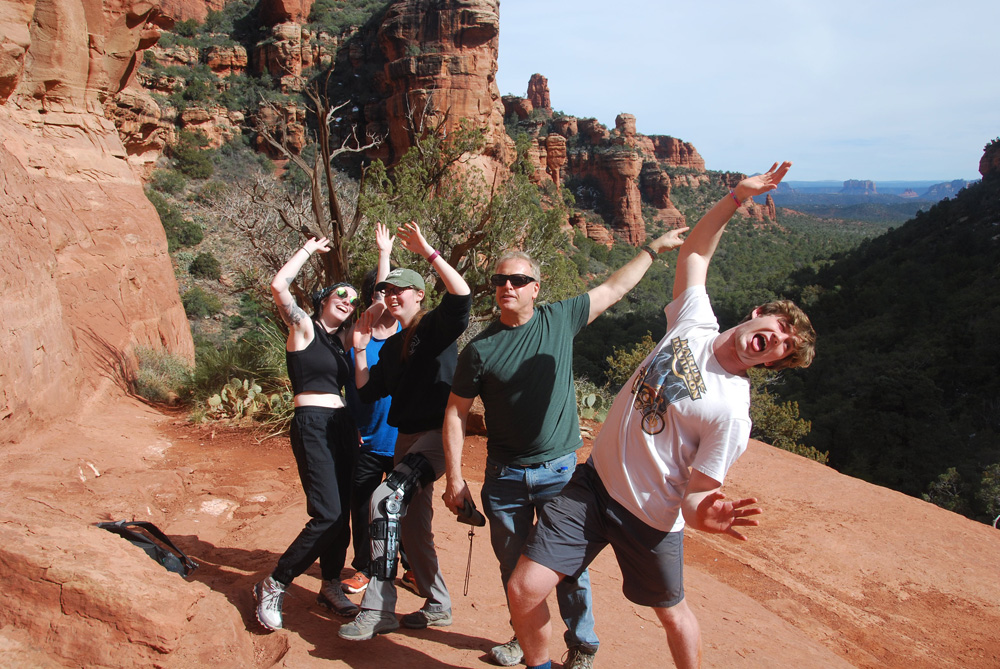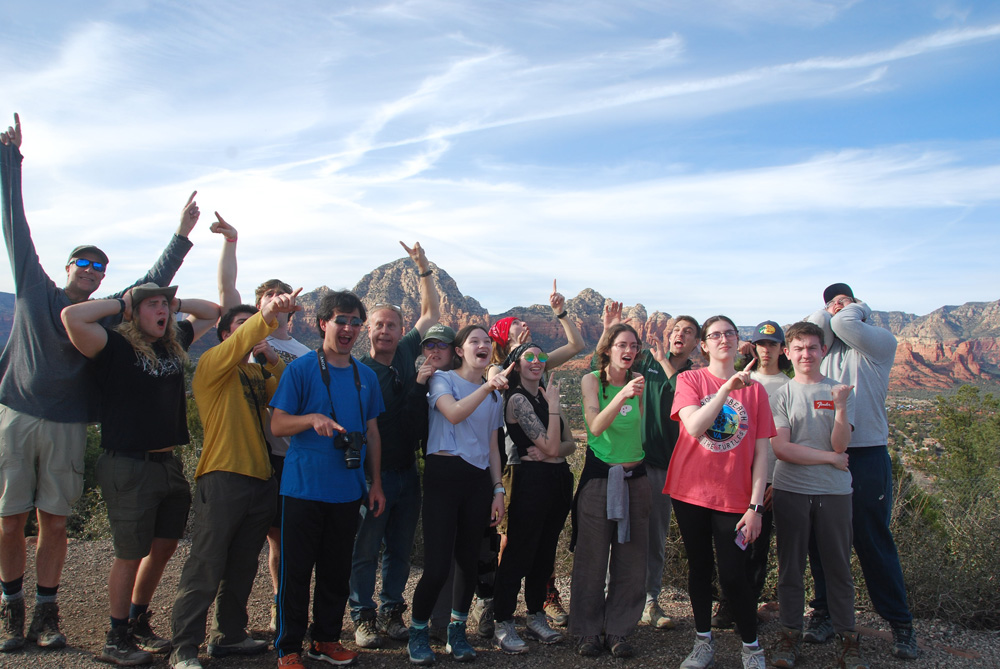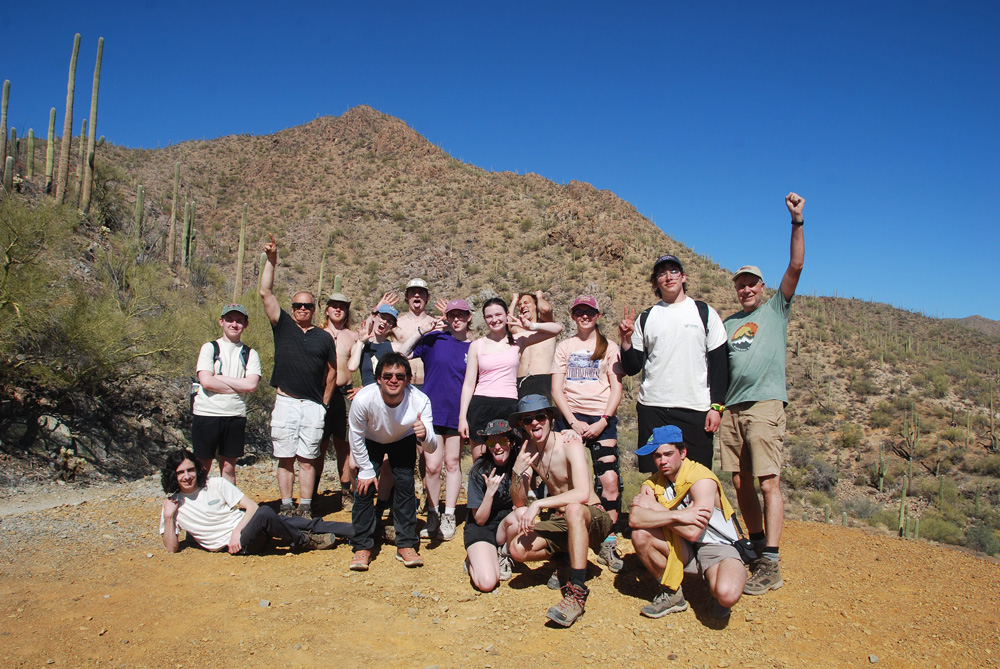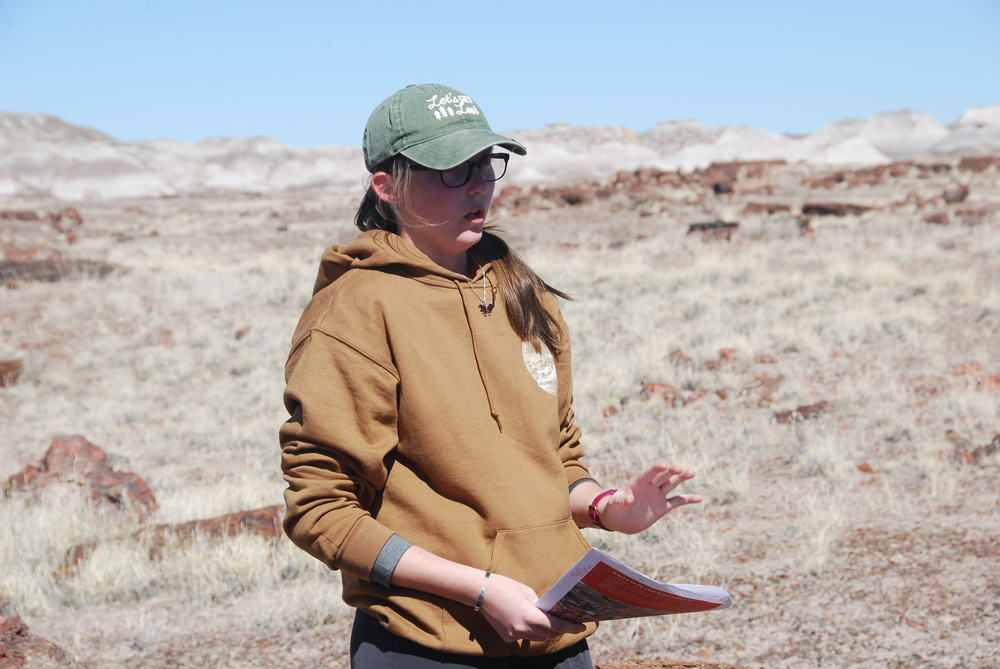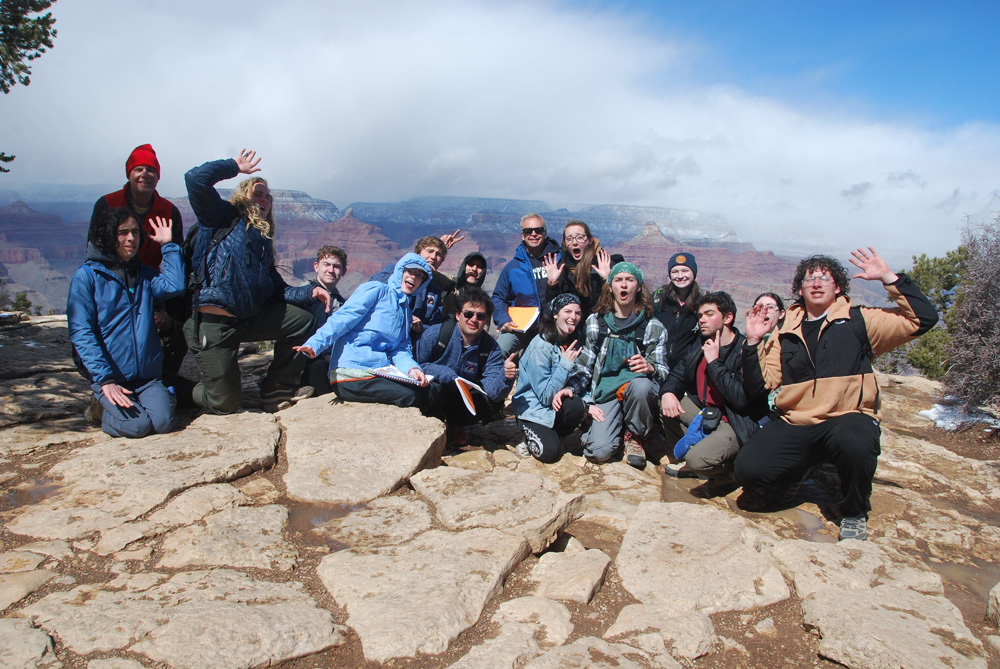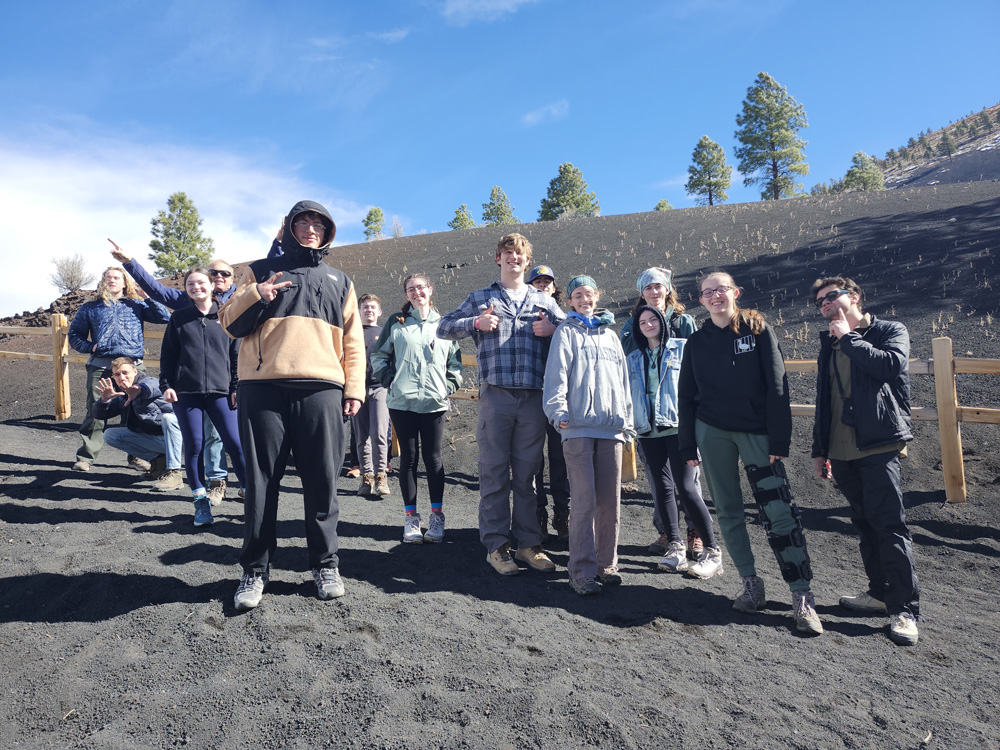- Apply
- Visit
- Request Info
- Give
EES students explore Arizona in field excursion
Students study geology, sedimentation, native heritage
Written by Noel Teter '24
Published on July 07, 2025
From a snowstorm at the Grand Canyon to a climb up an active volcano, environmental earth science (EES) students at Eastern Connecticut State University experienced the natural wonders of Arizona during a global field course (GFC) from March 14-26.
The course, titled “EES 271: Earth and Environmental Field Excursion,” was led by EES Professors Dickson Cunningham and Peter Drzewiecki. The two have traveled to Arizona three times to teach the course.
Students studied at national parks, monuments, and other “sites of special interest,” including the Grand Canyon, Meteor Crater, Sunset Crater, the San Francisco Volcanic Field, Petrified Forest National Park, and others, according to the course’s syllabus.
“The trip included student presentations, group discussions, and the thrill of making many new observations and field discoveries,” said Cunningham. “This was a hugely enjoyable trip as our student group was very enthusiastic and met every challenge with a positive spirit.”
He continued: “The students gained a diverse hands-on education in nearly every branch of geology and environmental science that was combined with beautiful hikes in dramatic landscapes all over the state, from the Colorado Plateau to Sedona to the mountains of the Sonoran Desert.”
Student Kaylee Slosek recounted what she studied on the trip, including native rock and volcano formations, wildlife, and meteor sites. Petrified Forest stood out as her favorite site of the expedition.
“Seeing wood as a rock with all these different colors and learning how this process happens was so interesting,” she said. “From this course and others I've taken, I know I want to travel for my career and see the world from different views.”
Additionally, the course familiarized students with the area’s native geology/geological history and educate them about the region’s ethical issues, including “the competing demands of resource extraction, societal development, tourism, environmentalism, and preservation of Native American culture,” explained the syllabus.
“The EES extended field courses provide superb experiential learning opportunities for EES majors that benefit their overall education and employment prospects,” concluded Cunningham.
